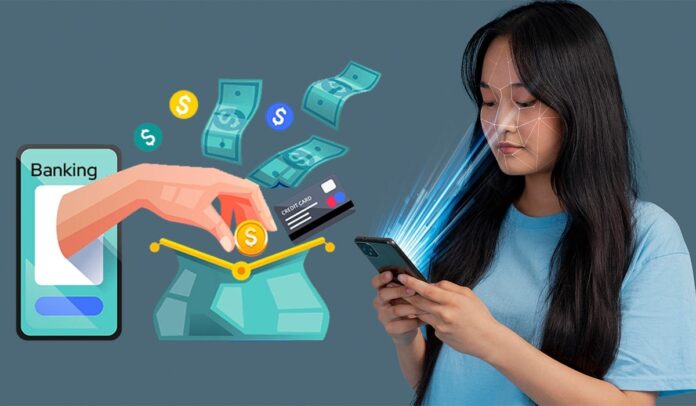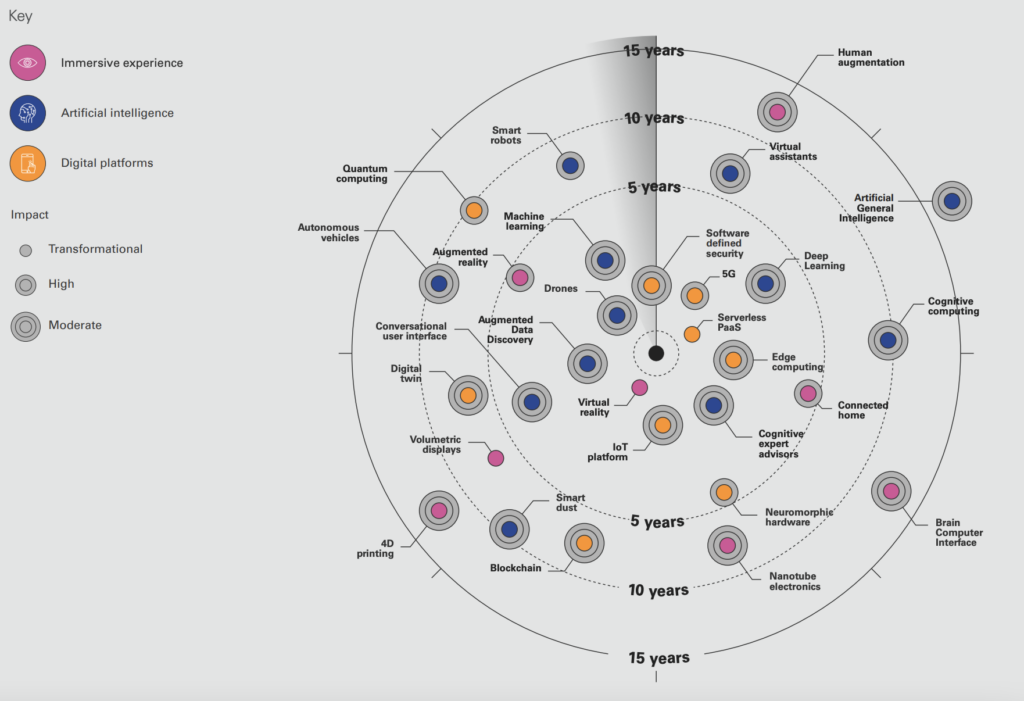
The Bank of the Future will be a platform of connected devices, offering hyper-personalized services through smart assistants:
By 2030 a hyper-connected world will be the norm. Consumers will be interacting with their service providers through voice and personal assistants, facial recognition and wearable devices.
Carrying a plastic card to tap at dedicated point of sale or even making mobile payments will be replaced by a secure voice command or a facial expression. With connectivity through the Internet of Things, virtually any device can become a digital channel for traditional business interactions such as payments and enquiries.

Many of the ‘connected everything’ devices still emerging in society today will become commonplace by 2030. The true enabler of all this connectivity will be a trusted digital identity provider with digital currency and sophisticated / personalised algorithms that will make the underpinning technology completely behind the scenes. Banks would be a natural fit for fulfilling this role.
Imagine the Bank of the Future proactively switching your subscriptions with non-banking services because they found a better offer available than your current provider. This could include the management of utilities and services in your home. With usage patterns well known through smart meters, banks can analyse providers’ offers based on peak pricing and volume discounts, switching providers in the background as better deals become available.
Rewards, partnerships and loyalty points will become the key differentiator between payment products, and integrated rewards advise customers which preferred payment method will maximise their benefit.
You’ll be able to simply walk into your local coffee shop or supermarket, order items, and leave – all without discussing payment options or the cost. Payment terminals are removed in favour of integrated real-time payment transfer solutions within point of sale systems.
Customers’ credit assessments will be far more holistic and will update in real-time, taking inputs such as lifestyle habits, purchase history and predictive analytics. Credit products will be far more tailored to an individual, providing customers with flexible repayment plans for each transaction while integrating rewards programs based on their credit rating. Transaction experiences will not differ between transferring between friends, or between continents.
Consumers have witnessed mass-personalisation through many of their digital experiences – think Netflix suggestions and Spotify personalised playlists. They will now expect the same from their financial services.
The Bank of the Future will be successful by being able to personalise not only their products and services towards the needs of the individual, but also their experiences.
Examples of personalisation across financial services include:
– Specific pricing of products catered to your usage, with terms aligned to your requirements
– Financial smart assistants who can conduct in depth analysis of your historic spending and saving patterns to provide comprehensive and achievable recommendations on the spot, helping you afford spontaneous purchases
Demonstrating this level of hyper-relevance will allow the Bank of the Future to truly integrate their services into your life and maximise the value they can deliver you. (Pollari et al., 2019, pp. 16, 18, 24)
This report was one of the last pieces of literature I read when conducting my research. From all the articles before, I was starting to come up with a consensus towards the subscription economy and how it could be leveraged in banking. With these design conjectures forming in my head, this report laid out a lot of the connections I was beginning to build upon.
In my search to see how emerging tech could impact wellbeing, I stumbled a lot upon the Internet of Things, how any device can become a digital channel for more business. I didn’t imagine this connectivity breaking from the devices themselves, and interacting straight with us like this report suggests. A secure voice command or facial expression will render a credit card useless, and our biometrics not only become data but commands.
If banks are the true enabler of all this connectivity, how do we make sure this doesn’t just facilitate a change, but actually causes an impact consumers desire? Would this truly benefit their wellbeing or just increase their interaction with technology? Whose future of digital banking does this refer to, and how do we stem from this a unified narrative that benefits everyone?
References
Pollari, I., Bekker, C., & Jowell, C. (2019). The future of digital banking in 2030. KPMG. https://assets.kpmg.com/content/dam/kpmg/ua/pdf/2019/09/future-of-digital-banking-in-2030-cba.pd.pdf



